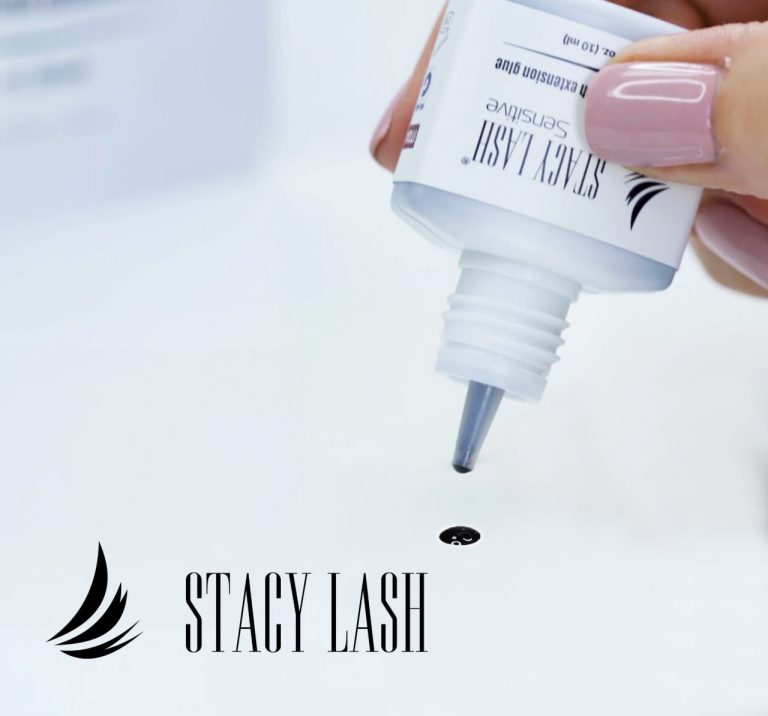Selecting the right lash glue is one of the most crucial decisions a lash technician makes. A well-matched adhesive ensures long-lasting retention, client comfort, and an overall positive experience. With the variety of professional lash adhesive options available, lash artists must consider key factors such as drying time, viscosity, bonding strength, and client sensitivities. Understanding these variables will not only improve retention but also reduce the risk of adverse reactions. In this guide, we will explore the key considerations for selecting the perfect eyelash glue for sensitive eyes, different lash styles, and salon environments.
Table of Contents
Adhesive Properties: Drying Time, Viscosity, and Bonding Strength
When selecting a professional lash adhesive, understanding its core properties is essential:
Drying Time: The speed at which eyelash extension adhesive dries can impact application efficiency and retention. Fast-drying adhesives (0.5–1 second) are ideal for experienced lash artists, while slower-drying adhesives (2–5 seconds) provide more flexibility for beginners.
Viscosity: The thickness of the adhesive affects how easily it flows and bonds to natural lashes. Low-viscosity adhesives are best for classic lash applications, whereas high-viscosity adhesives provide stronger bonding for volume techniques.
Bonding Strength: Adhesives differ in retention longevity, with some lasting up to 8 weeks. Stronger bonding adhesives are often favored for clients seeking long-lasting results, but they may contain higher levels of cyanoacrylate, which can increase the likelihood of sensitivities.
Understanding these characteristics ensures that lash artists make informed choices based on their skill level and client preferences.
Client Sensitivities: Choosing Adhesives for Sensitive Eyes
Some clients experience irritation or allergic reactions to standard eyelash extension adhesive formulations. For such clients, selecting a sensitive lash adhesive is critical. Here are some key considerations:
Low Cyanoacrylate Formulations: Cyanoacrylate is the main bonding agent in lash adhesives but can cause irritation in some clients. Low-fume adhesives designed for lash adhesive for sensitive eyes help minimize discomfort.
Formaldehyde-Free Adhesives: Some adhesives release trace amounts of formaldehyde as they cure, which can cause irritation. Opting for formaldehyde-free formulas can reduce potential reactions.
Patch Testing: Always perform a patch test 24–48 hours before a full application to identify potential allergic reactions in clients with known sensitivities.
Lash Bonder: A professional sealer creates a protective layer and seals the fumes, preventing the emission and minimizing the chance of irritation for sensitive clients.
Environmental Factors: Matching Adhesive to Salon Conditions
The effectiveness of professional lash adhesive can be influenced by the salon environment. Key factors to consider include:
Humidity: Adhesive drying time varies with humidity levels. In high humidity, adhesives cure faster, whereas in low humidity, drying time slows down. Choosing an adhesive that matches your salon’s typical humidity level is essential.
Temperature: Most lash adhesives perform best between 68–72°F (20–22°C). Too much heat can accelerate curing, while colder temperatures slow it down, leading to poor retention.
Ventilation: Ensuring proper ventilation in the salon reduces adhesive fumes and enhances client comfort, particularly when working with strong-bonding adhesives.
Lash Style Considerations: Adhesives for Volume vs. Classic Lashes
The choice of eyelash extension adhesive depends on the type of lash application:
Classic Lashes: A medium-viscosity adhesive with moderate drying time works best for classic lash sets, allowing precise placement on individual natural lashes.
Volume Lashes: A high-viscosity adhesive with quick drying time is recommended for volume fans to ensure a strong bond without excessive weight.
Mega Volume Lashes: Lightweight, flexible adhesives with high retention are preferred for mega volume applications to prevent stiffness and premature fallout.
Lash artists should select adhesives tailored to the specific technique they are using to optimize results and enhance client satisfaction.
Common Mistakes: Avoiding Mismatches in Adhesive Selection
Incorrect adhesive selection can lead to poor retention, discomfort, and dissatisfied clients. Common mistakes include:
Using Fast-Drying Adhesive for Beginners: If an adhesive dries too quickly, beginners may struggle with placement, leading to weak bonds and premature lash loss.
Mismatching Adhesive to Humidity Levels: Failing to adjust adhesive selection based on environmental conditions can result in inconsistent retention.
Ignoring Client Sensitivities: Using high-fume adhesives on clients with sensitive eyes can cause irritation and discomfort.
Applying Excessive Adhesive: Overuse of adhesive can cause clumping, poor lash isolation, and retention issues.
Failing to Shake Adhesive Properly: Adhesive components must be mixed thoroughly before each use to ensure consistency in bonding performance.
By avoiding these mistakes, lash technicians can provide better results and maintain a loyal client base.
Conclusion: Building Trust Through Informed Adhesive Choices
Selecting the right eyelash extension adhesive is crucial for ensuring optimal retention, client comfort, and a seamless application process. Lash artists must consider drying time, viscosity, and bonding strength while also addressing client sensitivities and salon conditions. Sensitive lash adhesive options help accommodate clients with sensitivities, while proper environmental adjustments ensure consistent performance. By taking a strategic approach to lash glue selection, lash professionals can deliver superior results and build trust with their clients.
Educating clients on adhesive selection enhances their confidence in the lash artist’s expertise, leading to long-term client relationships and business growth. Prioritizing lash adhesive tips and best practices ensures that every client receives a tailored experience, reinforcing professionalism in the eyelash extension industry.


